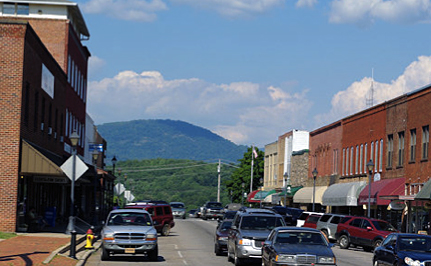Trust and Towns in Transition

Near the Blue Ridge Parkway, three North Carolina towns have grown rapidly as jobs shifted from mining and timber to hospitality and tourism. In Macon County, natural resource-based jobs plummeted from 10 percent to almost zero in the last 35 years. Meanwhile, service-industry employment in the Franklin area topped 30 percent.
It’s the kind of transition that can pit long-time residents worried about changes in “their” town against newcomers lacking a vested interest in community affairs. Conflicts arise over issues such as development and land use.
“A lot of communities are facing the same kind of transition, so it’s helpful to understand where residents get their information and which sources they trust and distrust,” said Dr. Jordan Smith, a research assistant professor in parks, recreation and tourism management at North Carolina State University. Smith draws on expertise in sociology and GIS technology to study changes in rural communities.
He carried out case studies in three southern Appalachian communities, all within a 40-minute drive of each other: Waynesville, which had a population of about 10,000 in the 2010 census; Franklin, home of almost 4,000 residents; and Spruce Pine, with a population of just over 2,000.
Smith asked a sample of residents in each community where they get information about community issues and how much they trust information from those sources.
In all three areas, the most trustworthy sources were immediate family members, churches, close friends and local newspapers. The least-trusted were elected officials, national TV news, online news and coworkers.
Results were similar for all three communities, with the only difference being slightly lower overall trust scores in Spruce Pine, the smallest community. The research is featured in Human Ecology.
Smith, who had been looking for evidence of changes in residents’ informational networks, didn’t find it.
“The driver of long-term conflict is different values and ideologies among long-term residents and newcomers,” he said. Community planners may be able to use his findings about trusted information sources to reach residents more effectively.
Smith’s next research will be visual. He’s planning to gauge residents’ reactions using 360-degree photos showing different levels of development along the Blue Ridge Parkway.
- Categories:


